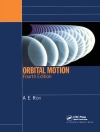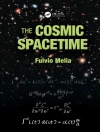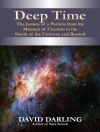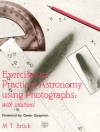Exploring Ancient Skies brings together the methods of archaeology and the insights of modern astronomy to explore the science of astronomy as it was practiced in various cultures prior to the invention of the telescope. The book reviews an enormous and growing body of literature on the cultures of the ancient Mediterranean, the Far East, and the New World (particularly Mesoamerica), putting the ancient astronomical materials into their archaeological and cultural contexts. The authors begin with an overview of the field and proceed to essential aspects of naked-eye astronomy, followed by an examination of specific cultures. The book concludes by taking into account the purposes of ancient astronomy: astrology, navigation, calendar regulation, and (not least) the understanding of our place and role in the universe. Skies are recreated to display critical events as they would have appeared to ancient observers–events such as the supernova of 1054 A.D., the ‘lion horoscope, ‘ and the Star of Bethlehem. Exploring Ancient Skies provides a comprehensive overview of the relationships between astronomy and other areas of human investigation. It will be useful as a reference for scholars and as a text for students in both astronomy and archaeology, and will be of compelling interest to readers who seek a broad understanding of our collective intellectual history.
Daftar Isi
Foreword.- Preface.- Acknowledgements.- List of Illustrations.- Part I – Astronomical Background.- 1. Historical Perspectives.- 2. Principal Features of the Sky.- 3. Observational Methods and Problems.- 4. Time and the Calendar.- 5. Transient Phenomena.- Part II – Astronomy in Cultures.- 6. Paleolithic and Neolithic Cultures.- 7. Antecedents of the Western Tradition.- 8. African Cultures.- 9. Indo-Iranian Cultures.- 10. China, Korea, and Japan.- 11. Oceanic Cultures.- 12. Mesoamerica.- 13. America North of Mexico.- 14. South American Cultures.- 15. The Descent of the Gods and the Purposes of Ancient Astronomy.- Appendices.- A. Archaeoastronomy Tools.- B. Modern Star Charts.- C. Sample Exercises and Problems.- D. Mayan Calendar Progression: A Sample.- References and Bibliography.- Index.
Tentang Penulis
David Humiston Kelley is a Canadian archaeologist and epigrapher, most noted for his work on the phonetic analysis and major contributions toward the decipherment of the writing system used by the Maya civilization of pre-Columbian Mesoamerica, the Maya script. Eugene Frank Milone received a bachelor’s degree from Columbia University in 1961, and a Ph.D. in astronomy from Yale University. After teaching for several years at Gettysburg College he re-located in 1971 to the University of Calgary, where he served as Director of the Rothney Astrophysical Observatory. Milone has published many technical papers in various areas of astronomical research, particularly specializing in variable stars and photometry and archaeoastronomy, and has served on several professional committees.












